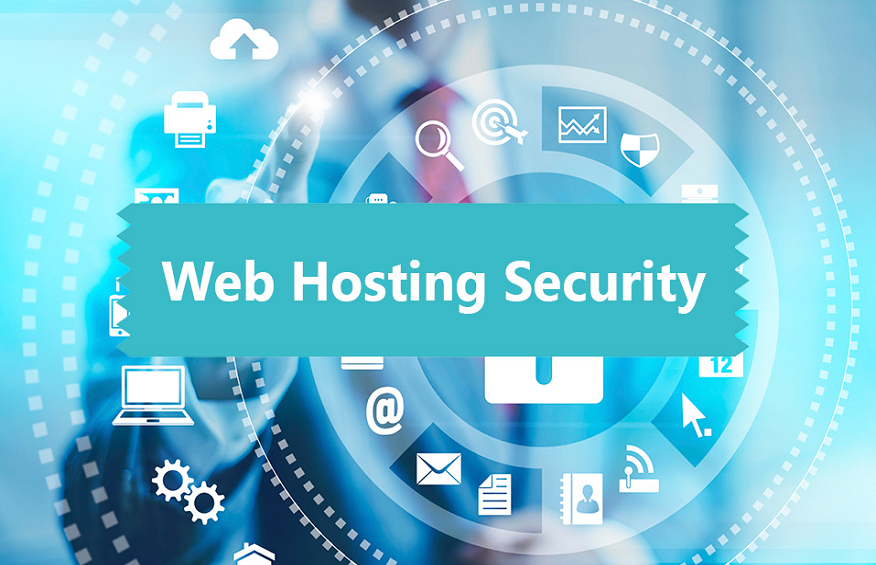The internet is potentially dangerous territory, it’s no secret. Between cyber attacks and data breaches, a plethora of threats can put your website and business at risk.
It is therefore essential to protect the account that is associated with your web hosting and your website.
In this article, we present fifteen best practices to adopt to ensure the security of your web hosting and thus protect your website.
1. Use a firewall to protect your web server
By preventing unwanted traffic from reaching your server, the firewall protects your web server. As you will see from reading the cybersecurity numbers , the firewall is one of the best safeguards. If you have subscribed to a shared hosting service, your host can provide you with a firewall solution. If you manage your own web server, it is up to you to choose a firewall solution for your server and configure it.
Updates are a crucial point for the security of your web server. You should therefore use the latest version of your web server software. Newer updates often include security fixes for vulnerabilities discovered on older versions. By keeping your web server software up to date, you help protect your server against known security threats.
2. Use a strong password for your web server administration account
Another important measure to secure your web server: use a strong password for your server’s administration account. Avoid using easy-to-guess words or phrases.
3. Limit access to your web server’s administration account
Also remember to limit access to the administration account of your web server. If possible, allow only people you trust to access it. You can also limit access to your server’s admin account by using a strong password and enabling two-factor authentication.
4. Properly configure your web server security settings
Your web server’s security settings must be properly configured. Poor security settings make your server vulnerable to attacks. To avoid configuration errors, refer to the documentation for your web server software.
In addition to keeping your web server software up to date, you also need to keep your operating system and other software up to date. Newer versions of software and operating systems often include security patches for vulnerabilities discovered on older versions. By keeping your software up to date, you protect your server against known security threats.
If you need to access your web server remotely, above all, use secure protocols such as SSH or SFTP. By encrypting the data transmitted between your computer and your server, these protocols make communications more difficult for attackers to intercept.
5. Regularly monitor your web server logs
Monitor your web server logs to detect suspicious activity on your server. Remember to check your logs regularly and whenever unusual activity catches your eye, investigate.
6. Use a web application firewall
A web application firewall (WAF) filters incoming traffic and blocks malicious requests. If you are using a shared hosting service, your host can provide you with a WAF solution. If you manage your own web server, it is up to you to select and configure a WAF for your server.
7. Strengthen security
Some actions allow you to increase security to better protect your web server. For example, you can disable unnecessary services, limit access to sensitive files and use Linux, which benefits from enhanced security.
8. Keep backup copies of your data
Remember to keep regular backups of your web server data. If your server was compromised, then you could restore your data from a backup. But be careful, store your backups in a safe place that is inaccessible from your web server.
9. Use a Content Delivery Network
Using a Content Delivery Network (CDN) can help improve the security of your website since your content is distributed across multiple servers. Thus, in the event of an attack, your website will be less likely to go down if the attackers only target one server.
10. Use HTTPS
Using HTTPS protects the data transmitted between your server and your visitors’ browsers. When this protocol is used, the data is encrypted before transmission. Attackers then have more difficulty intercepting and reading the data. The HTTPS protocol differs from HTTP mainly by its use of the TLS (Transport Layer Security) protocol, which is more secure than its predecessor, the SSL (Secure Sockets Layer).
11. Limit access to administrative interfaces
If your website has an administration interface, it is important to limit access to authorized users only. If attackers managed to access your administration interface, they could indeed modify your website or steal sensitive information.
12. Limit access to your servers
Access to your web servers should be limited to authorized personnel. For this, you can use firewalls, access control lists, and many other measures. Unauthorized persons must not have access to your servers, at the risk of doing significant damage.
In conclusion
For the security of your web hosting, remember to follow these fifteen best practices. They will help you protect your server and your website against attacks.

